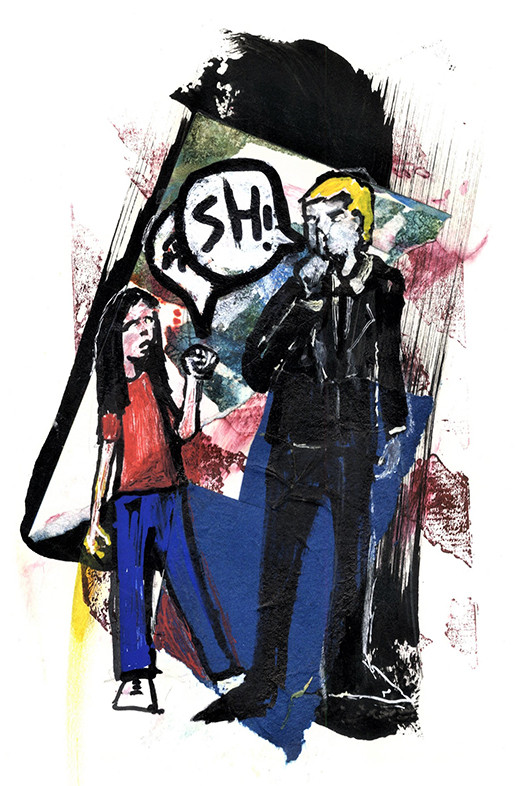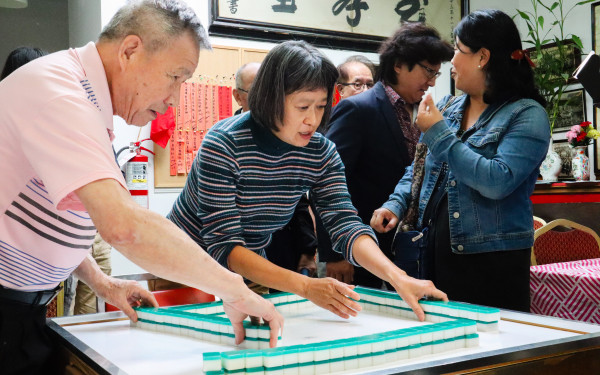People’s History of Canada: The History of Deaf Communities in Canada
The Importance of Recognizing and Preserving Signed Language
On May 13, 2019, federal Bill C-81 officially recognized American Sign Language, Quebec Sign Language, and Indigenous Sign Languages as the “primary languages for communication by Deaf persons in Canada.”
The bill aimed to promote inclusivity and equal access for a “barrier-free Canada.”
Spoken language has always been at the forefront of communication methods—yet an important part of society relates its experiences in a realm that does not rely on sound, where hand gestures and facial expressions drive conversations.
According to the Canadian Association of the Deaf, it is estimated that there are over 350,000 culturally Deaf Canadians and over 3 million hard of hearing Canadians.
Indigenous Sign Languages, widely used before colonization, still don’t receive as much attention by linguists as spoken languages.
Most people have heard of American Sign Language or Quebec Sign Language, but for centuries, Inuit Sign Language has been an important part of the Inuit linguistic landscape.
It is estimated that there is a higher percentage of Deaf people in Inuit communities (5.7 in 1000) than in Canada in a whole (one in 1000).
Paige MacDougall, director of research at the Canadian Deafness Research and Training Institute, has been recording the Inuit Sign Language used in Nunavut as part of a recent initiative.
“We are really trying to revitalize this part of Canadian history that has been relatively ignored,” said MacDougall.
The Preservation and Revitalization of Inuit Sign Language project aims to record the stories of Deaf persons and their families in their own customary language.
MacDougall explained that Inuit Sign Language has a long history among Inuit.
“There is a strong emphasis on family values and community. Deaf people aren’t as alienated from social life, and there is a higher degree of sign language used among the hearing population. So there’s not as much discrimination and there’s no specific formation of Deaf culture in opposition to hearing culture.”
— Paige MacDougall
“There is a strong emphasis on family values and community,” she said. “Deaf people aren’t as alienated from social life, and there is a higher degree of sign language used among the hearing population. So there’s not as much discrimination and there’s no specific formation of Deaf culture in opposition to hearing culture.”
Signed languages have been used for years by both Deaf and hearing Inuit communities.
In Inuit culture, the nomadic lifestyle of hunting, trapping, and fishing seems to have always valued the use of signs, according to MacDougall.
According to Jeffrey E. Davis, author of the book Hand Talk: Sign Language Among American Indian Nations, signed communication—also used in the past for treaty negotiations—still plays a crucial role in traditional storytelling, prayers, legends, and rituals.
Schools for the deaf
Understanding Deaf culture requires us to look back at the historical role of residential schools for deaf children.
Historically, deaf children were sent to residential schools for the deaf—where sign language was forbidden in favour of oral programs.
There would have been a few cases of children being taught American Sign Language, the report says.
Consequently, these children experienced many difficulties communicating with their families when returning to their communities up north for the holidays or the weekend.
Around the 1850s and 1860s, oralism started gaining popularity in North America.
Alexander Graham Bell, commonly known as the inventor of the telephone, was actually one of the most prominent advocates of oralism.
Despite being fluent in sign language and both his mother and wife being deaf, Bell discouraged sign language in favour of lip-reading and speech.
He felt that visual languages contributed to the impairment of speech development.
Bell advocated for abandoning the use of sign language in schools and did not believe in Deaf intermarriage.
“The oralist position views deafness as a deficiency and that integration into the hearing world should be the goal of all Deaf people,” explained Fern Elgar in their 1997 thesis, submitted as a master’s student in anthropology, comparing the histories of Indigenous residential schools and residential schools for the deaf.
In the late-nineteenth century, Thomas Widd, a Deaf Englishman, and his wife, Margaret Fitzakerly Widd, were among the first to have significantly contributed to the development of Deaf identity in Canada.
They founded the Protestant Institution for Deaf-Mutes in Montreal, now known as the Mackay Centre School.
Around the 1970s and 1980s, oralism programs started to decline in favour of ASL and manualism, which supported the use of sign language in the teaching of the deaf.
An important figure in the quest for recognition of sign language as a legitimate language was American linguist William C. Stokoe Jr.
Considered the father of ASL linguistics, Stokoe published his 1960 monograph, Sign Language Structure: An Outline of the Visual Communication Systems of the American Deaf, which supported significant changes in both deaf education and linguistics.
For centuries, the Deaf community has fought for its rights and privileges. Not until the thirteenth century did Deaf people finally gain the right to marry in the Western world, according to the CAD.
From the right to use sign language in classrooms to being viewed culturally rather than pathologically, Deaf Canadians have continued to protect their unique culture.
In May 1989, Deaf communities all over Canada staged a massive protest demanding recognition of their fundamental rights.
This included a call for schools for the deaf to remain open and for the acknowledgment of ASL in the school system, which would enable more inclusive education.
More recently, in June 2019, Bill C-91, an Act respecting Indigenous languages was criticized for not being co-developed with Inuit, as well as for a lack of legal measures to safeguard Indigenous languages.
Deafness must be seen as a cultural identity.
As the CAD states on its website, “Sign languages of Deaf people are true languages and must be given the same status and respect as any other language.”
The CAD notes that most violations of human rights of Deaf people are unintentional and seem to stem from “systemic discrimination, inappropriate priorities, and simple ignorance.”
However “the ‘unintentional’ nature of the discriminatory act does not justify it,” it writes.
“Deaf people are human beings and have the same ‘right to rights’ as anyone else.”


_600_832_s.png)



